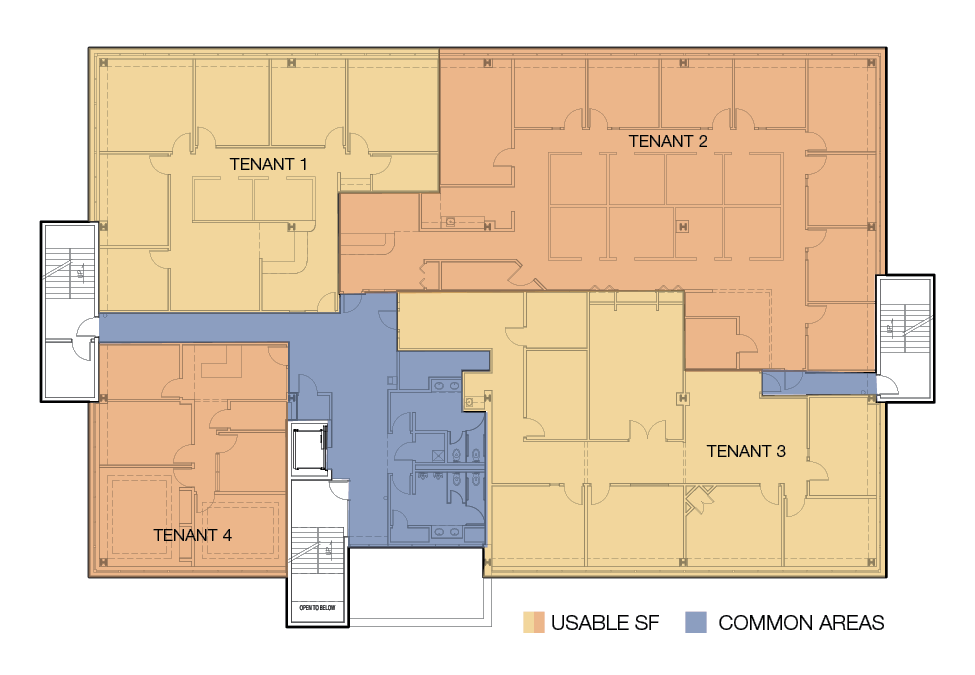Understanding Rentable Vs. Usable Square Feet In Office Space Leasing
When leasing office space, tenants often encounter the terms “usable” and “rentable” square footage, which can lead to confusion regarding their differences. This article aims to explain the concepts of usable and rentable square footage and shed light on why tenants are expected to pay rent based on the larger of the two calculations.
As an office space sales and leasing specialist, I frequently receive questions about the distinction between usable and rentable square footage. Simply put, usable square footage refers to the area within the boundaries of a specific suite. While it may seem logical for tenants to pay solely for the area they use within their suite’s walls, it’s important to recognize that building common areas, such as lobbies, restrooms, and hallways, incur upkeep costs. These common areas are shared by multiple tenants and their guests. To address how these costs are handled, the concept of rentable square footage comes into play. The rentable factor, also known as the load factor, represents the proportionate share of building common areas assigned to a particular suite. For example, if a tenant leases 50% of a building, they are responsible for the costs associated with 50% of the common areas in addition to the usable square footage within their space. This arrangement helps offset the expenses of maintaining and operating these shared spaces, including heating, cooling, maintenance, cleaning, and more.

It’s important to note that the rentable concept has some nuances. For instance, if a tenant expands within a building, a long hallway may become incorporated within their “usable” space. Conversely, if a tenant downsizes, the landlord may need to add a new common hallway to meet fire safety requirements. These scenarios demonstrate that common areas are not always static. To address these changes, most landlords incorporate a “market rentable factor” instead of constantly recalculating fluctuating common area configurations. In the Kansas City market, and throughout much of the Midwest, market rentable factors ranging from 11% to 13% are commonly used, depending on the building’s class.
Understanding the distinction between usable and rentable square footage is crucial when leasing office space. Usable square footage refers to the area directly occupied by a tenant within their suite, while rentable square footage adds on the pro-rata share of common areas for which tenants are responsible. This approach enables landlords to cover the costs of maintaining shared spaces. By clarifying these concepts, tenants can make informed decisions during lease negotiations and ensure transparency in rent calculations and estimations of future rent increases.
For More Information contact Mark Talley, CCIM at 913-956-5810 or by email at mtalley@nai-heartland.com